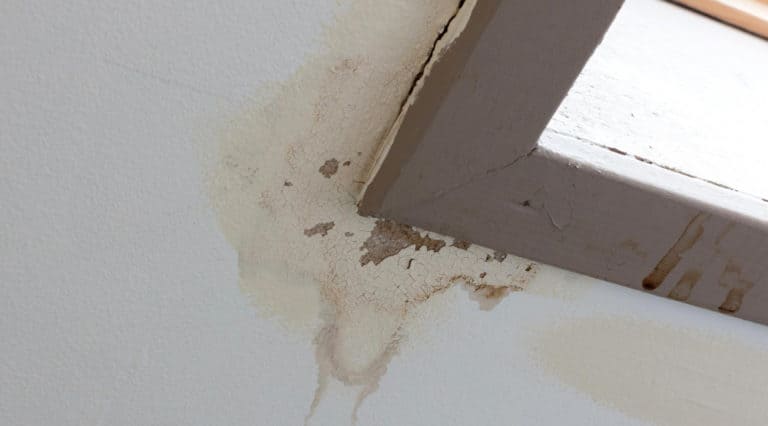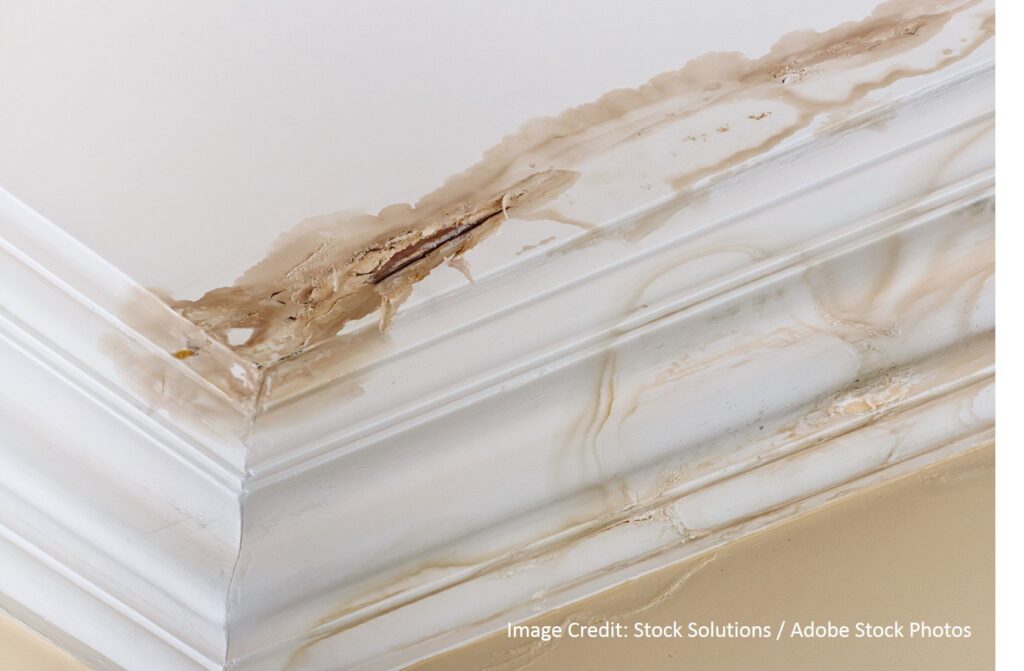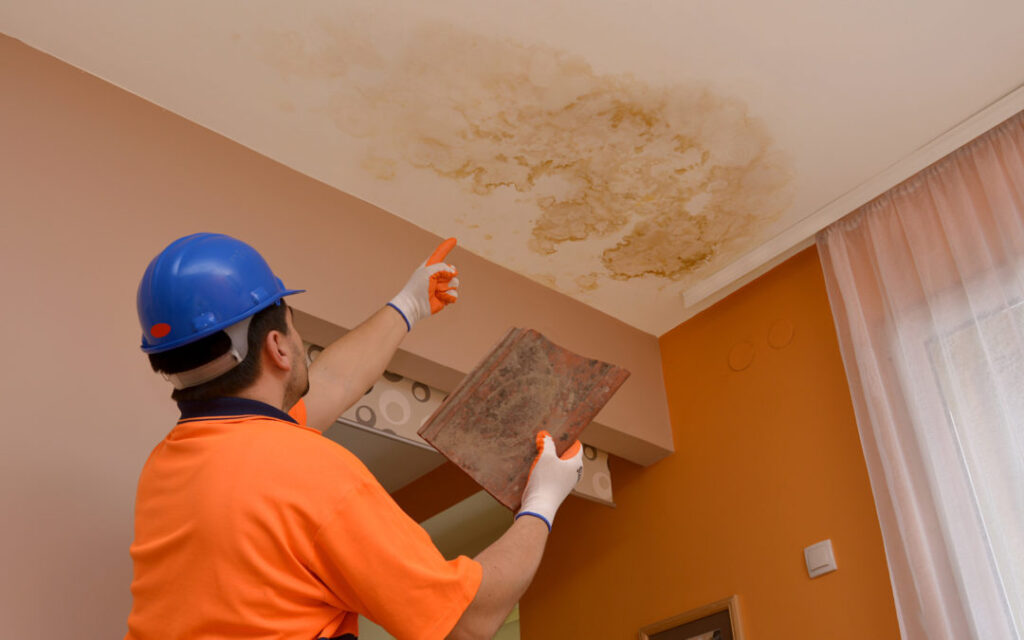In the realm of homeownership, few issues are as worrisome as the discovery of a water leak. The potential damages and costs associated with leaks can be substantial, but accurately identifying the source of the leak is paramount. This article aims to provide you with valuable tips on distinguishing between a roof leak and a pipe leak. By understanding the subtle nuances and distinctive signs of each, you will be equipped to effectively address the issue, safeguard your property, and make informed decisions regarding necessary repairs.

This image is property of blog.azroof.com.
Tip 1: Location of the Leak
Inspect the Roof Area
When trying to distinguish between a roof leak and a pipe leak, it is important to assess the location of the leak. Start by inspecting the roof area. Look for any obvious signs of damage such as cracked or missing shingles, damaged flashing, or worn-out roofing materials. These can be indications that the leak originates from the roof.
Check the Ceiling and Walls
Next, examine the ceilings and walls inside your home. Look for water stains, discoloration, or bulging areas. These signs may suggest that water is seeping through from above. If you notice any dampness or moisture, it is likely that the leak is coming from the roof.
Look for Water Stains and Damage
Water stains and damage can provide valuable clues about the source of the leak. Pay close attention to the areas directly below the suspected leak location. If you observe water stains or signs of moisture, there is a higher chance that the leak is originating from the roof. However, keep in mind that water can sometimes travel along beams or pipes, so conducting a thorough inspection of both the roof and plumbing system is crucial to accurately identify the source.
Tip 2: Type of Water
Color and Clarity of Water
Examining the color and clarity of the water can help determine whether the leak is from a roof or a pipe. If the water is clear and appears to be rainwater, it is more likely that the leak originates from the roof. On the other hand, if the water is discolored or murky, it could be a sign of a pipe leak, as water from pipes may contain impurities.
Presence of Foul Odors
Another indicator of a pipe leak is the presence of foul odors. If you detect unpleasant smells such as sewage or rotten eggs, it is likely that the water leaking is coming from a pipe rather than from the roof. This is because pipes are connected to the plumbing system, which can carry waste or sewer gases.
Consistency and Volume
Considering the consistency and volume of the water can also provide clues about the source of the leak. If the water is continuously flowing, it is more likely to be a pipe leak. Roof leaks, on the other hand, may result in intermittent or dripping water. Additionally, if the volume of water is significantly high, it is more probable that it is coming from a pipe rather than a small roof leak.

This image is property of mytrustedexpert.com.
Tip 3: Time of Occurrence
Daytime Leaks
The timing of the leak can offer insights into its source. If the leak occurs predominantly during the daytime, when it is not raining, it is more likely that the issue lies with the plumbing system rather than the roof. Daytime leaks suggest that pipes or fixtures connected to the plumbing system are the primary culprits.
Nighttime Leaks
Conversely, if the leak occurs primarily during the nighttime, it is more indicative of a roof leak. Nighttime leaks often coincide with heavy rainfall, making it more likely that water is penetrating through the roof and seeping into the interior of the building.
Leaks During or After Rain
Leaks that occur specifically during or after rain showers can also be strong indications of a roof leak. The timing correlation suggests that water is entering through the roof during precipitation events. Therefore, paying attention to the timing of the leak can provide valuable information when trying to distinguish between a roof leak and a pipe leak.
Tip 4: Seasonal Variations
Temperature Fluctuations
Seasonal variations, particularly temperature fluctuations, can impact the likelihood of a roof leak versus a pipe leak. In colder climates, freezing temperatures can cause pipes to burst or crack, resulting in leaks. If the leak occurs during winter or when temperatures are low, it is more likely to be a pipe-related issue. Roof leaks, on the other hand, can occur throughout the year, regardless of the temperature.
Weather Patterns
Analyzing weather patterns can help determine the source of the leak. Roof leaks are more likely to occur during or after rain showers, as water can penetrate through damaged or compromised areas of the roof. Monitoring the weather conditions when the leak is happening can provide valuable insights into whether the issue stems from the roof or plumbing system.
Condensation or Humidity Issues
In some cases, condensation or humidity issues can mimic the symptoms of a leak. Excessive condensation on windows or walls can give the illusion of a leak, but it is important to rule out other causes before concluding it is a roof or pipe issue. Adequate ventilation and moisture control can help alleviate condensation-related concerns, allowing for a more accurate diagnosis of the leak.

This image is property of www.austinlonghornroofing.com.
Tip 5: Roof Condition
Inspect the Roof for Damage
The condition of the roof itself is a crucial factor in determining whether the leak originates from the roof or a pipe. Conduct a thorough inspection of the roof, paying attention to any visible signs of damage. Look for cracked or missing shingles, deteriorated flashing, or areas with pooling water. These indicators point towards a roof-related issue.
Age and Condition of the Roofing Materials
Consider the age and condition of the roofing materials when assessing the source of the leak. Older roofs are more susceptible to damage and deterioration, making them more prone to leaks. If your roof is approaching the end of its lifespan or exhibiting signs of wear and tear, it is more likely that the leak is originating from the roof.
Loose or Missing Shingles
Loose or missing shingles are common culprits for roof leaks. Strong winds, storms, or natural aging can cause shingles to become dislodged or damaged, providing entry points for water. If you notice loose or missing shingles during your roof inspection, it is likely that the leak is coming from the roof.
Tip 6: Plumbing Fixtures and Connections
Check Visible Pipes and Connections
When trying to differentiate between a roof leak and a pipe leak, it is essential to inspect visible pipes and connections. Check for any signs of leaks, dampness, or water stains around the exposed pipes. These could indicate that the leaks are originating from the plumbing system rather than the roof.
Inspect Faucets, Toilets, and Showers
Faucets, toilets, and showers are common fixtures that can experience leaks. Examine these areas closely for any signs of dripping water, water stains, or puddles. If the leak is present only when using specific fixtures or occurs when the fixtures are in use, it is likely that the issue lies with the plumbing system.
Look for Signs of Water Damage
Water damage around plumbing fixtures can provide valuable insights into the source of the leak. Check for signs of water stains, mold growth, or damaged surfaces near pipes, faucets, or fixtures. If you observe extensive water damage in specific areas, it is more indicative of a pipe leak.

This image is property of www.321gutterdone.com.
Tip 7: Water Supply Shut Off
Turn Off the Main Water Supply
In situations where a leak is ongoing and its source is uncertain, shutting off the main water supply can help narrow down the possibilities. By turning off the water supply, you can determine if the leak stops completely or if it continues in a reduced capacity. If the leak ceases entirely after shutting off the water supply, it suggests that the issue is related to the plumbing system.
Monitor if the Leak Stops
After shutting off the main water supply, closely monitor the affected areas to see if the leak subsides completely. If the leakage continues even with the water supply turned off, it indicates that the problem may be a roof leak or a persistent issue within the plumbing system that requires professional attention.
Isolate Specific Areas for Testing
To further pinpoint the source of the leak, you can isolate specific areas by turning off individual water valves or shutting off water to separate sections of the plumbing system. By selectively controlling the water supply, you can observe if the leak occurs only when certain fixtures or areas are in use. This can help determine if the issue is localized to specific pipes or fixtures.
Tip 8: Plumbing System Pressure Test
Hire a Professional Plumber
If you are still uncertain about the source of the leak after conducting initial inspections, it may be necessary to hire a professional plumber. A plumber can perform a pressure test on the plumbing system to identify any hidden leaks or weaknesses that may not be readily apparent. Their expertise and specialized equipment can provide a more accurate assessment.
Pressurize the Plumbing System
During a pressure test, the plumber will pressurize the plumbing system to a specific level and monitor for any pressure drops. A pressure drop indicates the presence of a leak. By pressurizing different sections of the plumbing system and observing which areas experience pressure drops, the plumber can narrow down the source of the leak.
Check for Leaks in Visible Pipes and Fixtures
While conducting the pressure test, the plumber will also closely inspect visible pipes and fixtures for leaks. By examining these components under pressure, they can identify any obvious signs of leakage or hidden issues. This comprehensive assessment can help determine if the leak originates from the plumbing system.

This image is property of lirp.cdn-website.com.
Tip 9: Roof Inspection and Repair
Call a Roofing Expert
If the inspections and tests suggest that the leak is coming from the roof, it is crucial to engage the services of a professional roofing expert. Proper roof inspection and repair require specialized knowledge and skills that a qualified roofer can provide. Attempting to fix roof issues without professional assistance can result in further damage and potentially worsen the leak.
Examine the Roof for Potential Issues
The roofing expert will thoroughly examine your roof to identify any potential issues. They will inspect the entire roof surface, paying close attention to areas that are prone to leaks, such as valleys, flashing, and roof penetrations. By identifying and addressing these problem areas, the roofing expert can help prevent future leaks.
Repair or Replace Damaged Areas
Once the inspection is complete, the roofing expert will recommend the necessary repairs or replacements. This may involve fixing damaged shingles, replacing worn-out flashing, or sealing any gaps or cracks. It is important to follow the recommendations of the roofing expert to ensure that the leak is properly resolved and the roof remains in good condition.
Tip 10: Seek Professional Help
Contact a Plumber or Roofing Specialist
In situations where the leak is persistent, complex, or beyond your expertise, it is advisable to seek professional help. Contacting a plumber or roofing specialist can provide you with the necessary expertise and assistance to accurately identify and resolve the leak. Professionals have the knowledge, experience, and tools to effectively address the issue and prevent further damage.
Get Expert Advice and Assistance
When dealing with a roof leak or a pipe leak, obtaining expert advice and assistance is crucial. Professionals can offer insights based on their experience and provide personalized solutions tailored to your specific situation. They can guide you through the process of diagnosing the source of the leak and recommend the appropriate course of action.
Consider the Complexity and Severity of the Leak
Lastly, when deciding whether to seek professional help, it is important to consider the complexity and severity of the leak. If the leak is minor, easily accessible, and can be safely addressed through basic repairs, it may be possible to resolve it independently. However, if the leak is significant, poses safety risks, or requires specialized knowledge, it is best to rely on professionals to ensure the issue is resolved effectively and efficiently.
